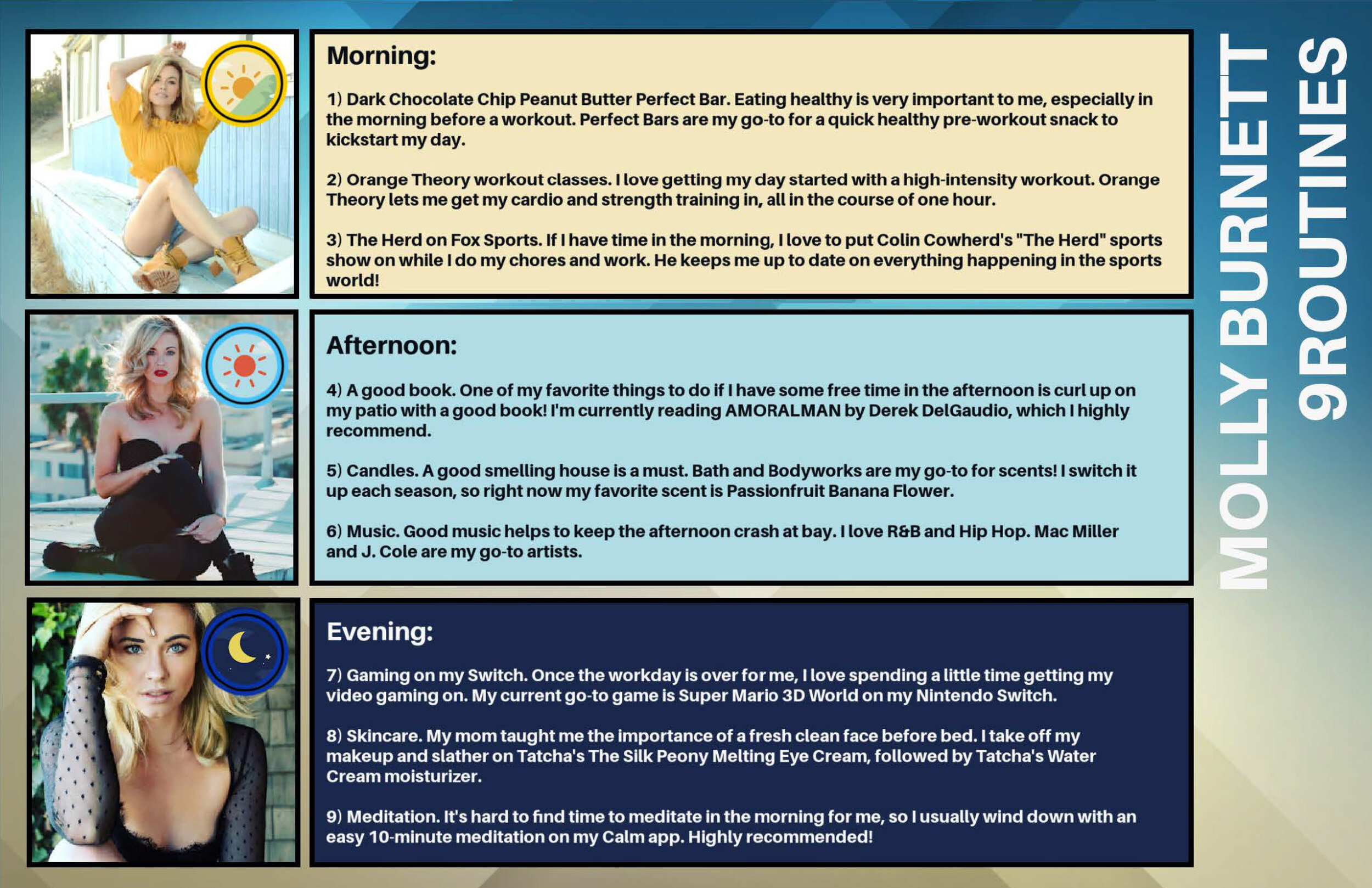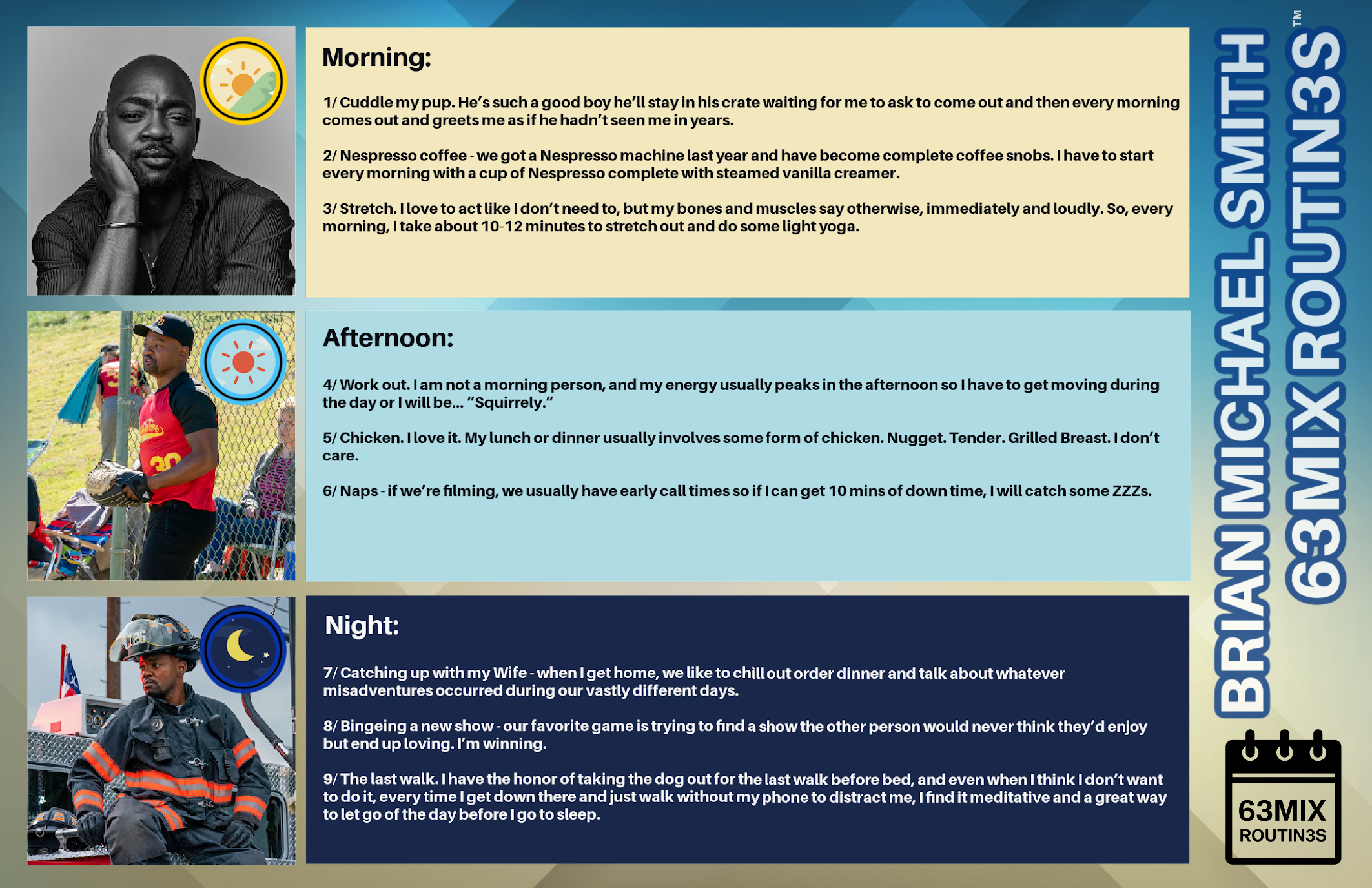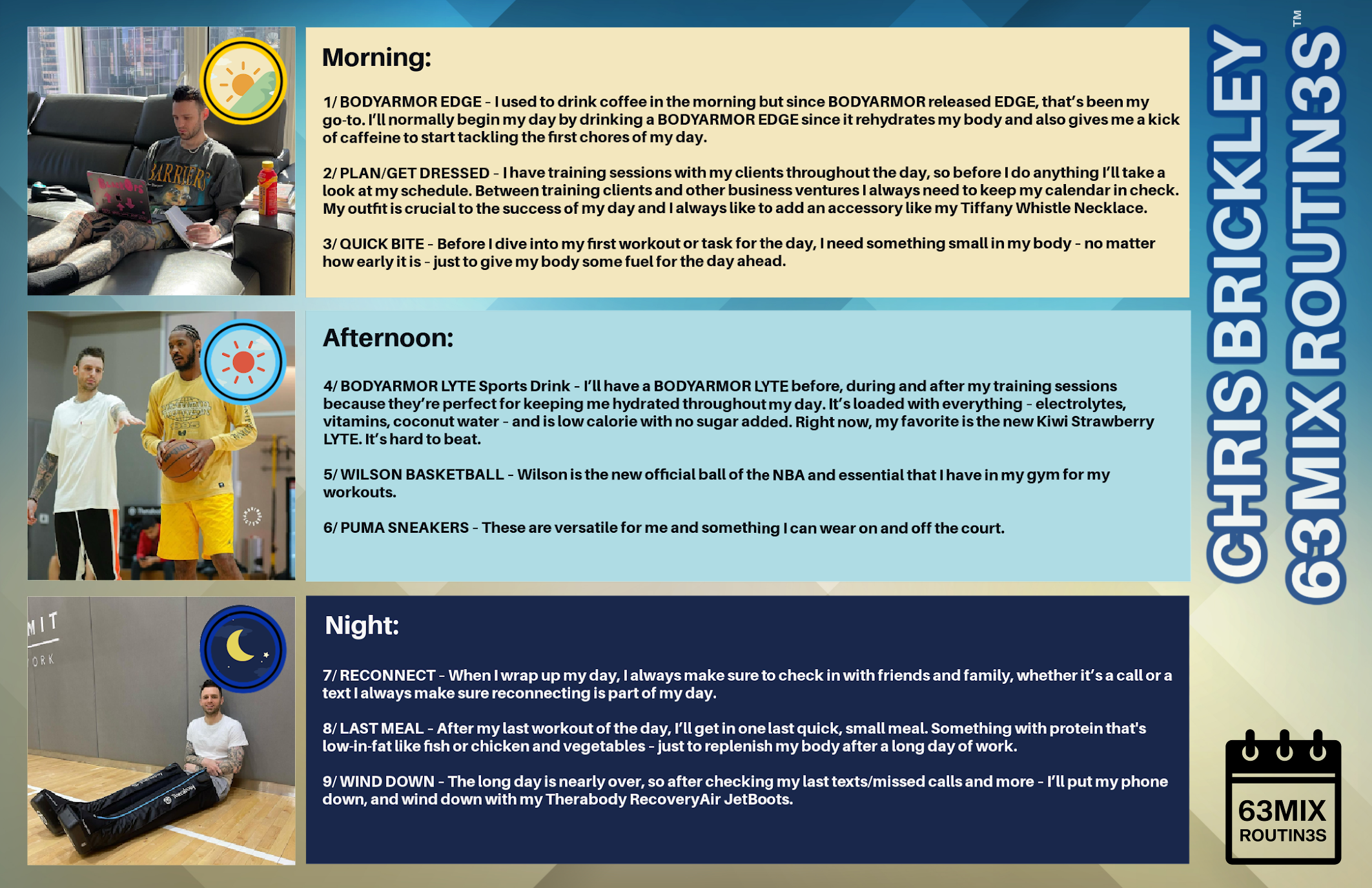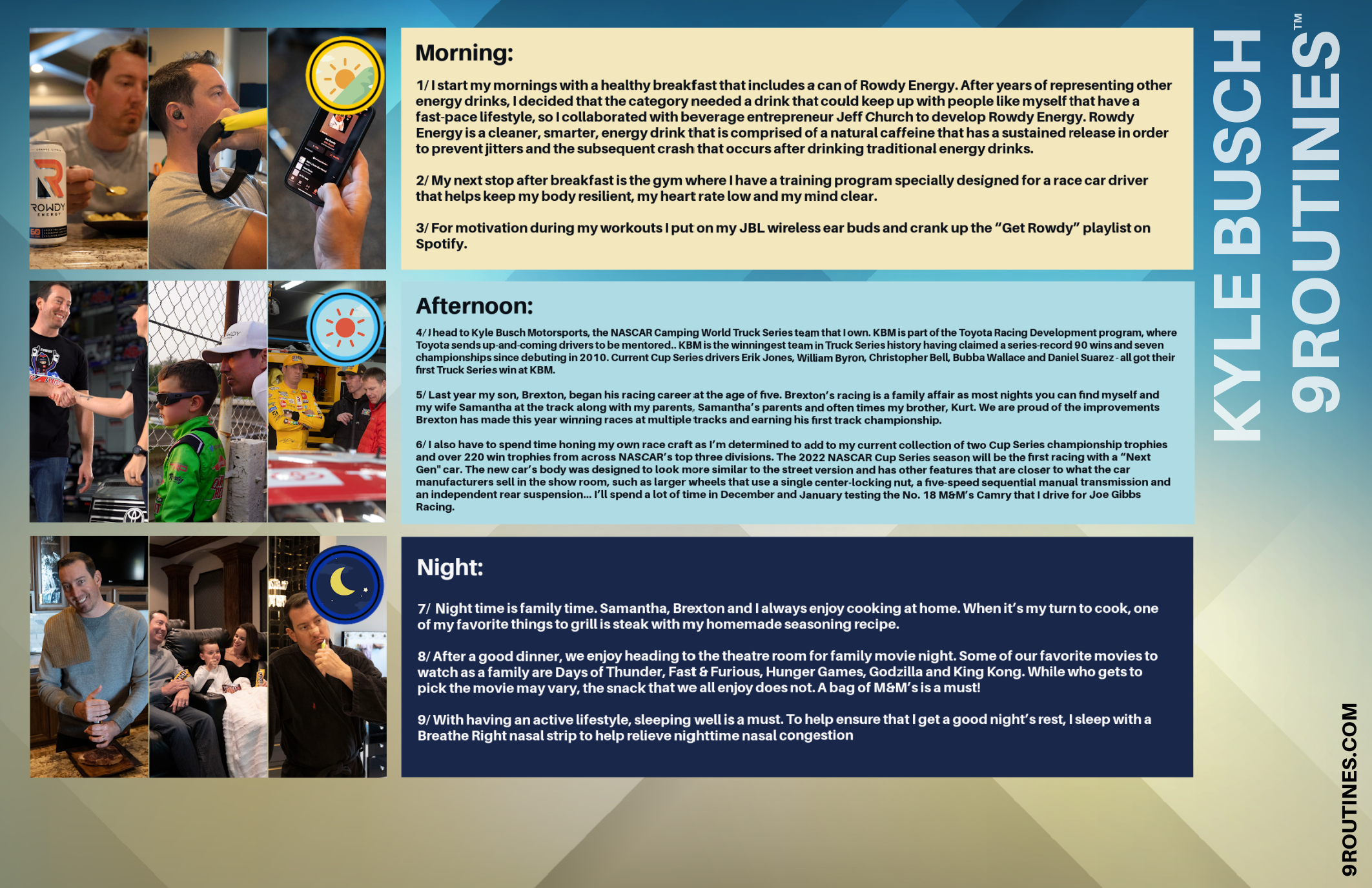ATHLEISURE LIST | BREATHWRK
Breathwork as a category is rooted in bonafide clinical science. Not only are breathing exercises proven to positively impact qualitative stuff like how you feel, they also improve biometrics like heart rate and blood pressure. Breathing exercises provide nearly instant relief, and with prescriptive combinations of inhales, exhales and holds, require no skill or experience.
For all these reasons, the team at health app Breathwrk believe their product is one of the most powerful solutions for the mass market. In the app, content is grouped into 4 core categories:
Night Time: Trouble shutting your mind off before bed can result from an overactive sympathetic nervous system, which controls your fight or flight response. Extended exhales raise your body’s relaxation center, the parasympathetic nervous system, to soothe overactivity and help you sleep faster.
Calm: Whenever someone tells you to "take a deep breath," the techniques in this category are what they’re referring to.
Perform: Executing a challenging breath hold at the end of your exhale increases your body’s red-blood-cell production for superior oxygen efficiency. The techniques in this category also support faster recovery by lowering your pulse after periods of intense exertion.
Energize: Short-burst inhales & exhales raise your body’s activity center to prime your nervous system for intense mental & physical effort, increasing heart rate, alertness and focus.
The free version of the app includes a small percentage of the exercise library, with their most popular breaths. For those interested in a deeper and more diverse Breathwrk practice, the competitively priced Pro version unlocks all content. There are a number of features that incentivize habitual usage. The most powerful is tracking against oneself, using features like Streaks to motivate consistency.
The company also extended into the real world with one of the first studios specializing in breathing exercises, building an even stronger community. At the studio, classes will help people wake up, strength train, sleep better and even achieve psychedelic-adjacent states.
If you would like to check out Breathwrk's app for a 7-day free trial, then click here to get 30% off Breathwrk Pro for 1 year, exclusive to Athleisure.
BREATHWRK
904 Pacific Ave
Venice, CA 90291
breathwrk.com
IG @breathwrk
TT @breathwrk
PHOTO CREDITS | Breathwrk
Read the SEP ISSUE #81 of Athleisure Mag and see ATHLEISURE LIST | Breathwrk in mag.
9LIST ROUTIN3S | MOLLY BURNETT
PHOTOS COURTESY | Efe Kurnaz
LET'S CHECK IN ON OUR MENTAL HEALTH WITH DR. HAFEEZ
May is known as Mental Health Awareness month. We took some time to delve into how one define's mental health and what are some of the symptoms that someone may have. Dr. Sanam Hafeez shares what this involves.
ATHLEISURE MAG: When people use the term, Mental Health what does that mean?
DR. SANAM HAFEEZ: The dictionary defines it as: “A person’s condition with regard to their psychological and emotional well-being.” To give it broader strokes, the term mental health is akin to mental fitness. It means, how “stable” is a person in their head? Do they have what would be considered normal reactions to everyday disappoints or situations? Can they manage anger? Can they make and maintain relationships? Do they engage in self destructive behavior? Are they violent? Do they abuse drugs or alcohol? Do they have post-traumatic stress or obsessive compulsive disorder? Do they have eating disorders?
AM: What is the importance of Mental Health Awareness month in May?
DR. SH: There is less of a stigma attached to forms of mental illness than there used to be. Even Princes Harry and William have taken this up as one of their philanthropic causes. There is a saying within mental health, and that is: “Your secrets keep you sick.” The more that celebrities such as Demi Lovato admit to battling some form of mental illness, the more everyday people have the strength to come forward and seek help. We have empathy (as we should) for people stricken with Cancer, Aids, Parkinson’s , etc. we must have the same understanding for people who carry the burden of depression, anxiety, addiction or other forms of mental illness. People do not need to suffer in silence, as many of these conditions can be treated with medication and therapy.
AM: In the last few years, there seems to be a focus on providing education and acknowledging the fact that taking care of ourselves within this space is just as important as a number of other things we do from day to day – why do you think that right now that this is something that we’re hearing a lot more about in the media, social media, personalities etc?
DR. SH: We live in a world where there is more openness and honesty than that of our parent’s generation. Our parents were taught not to “air their dirty laundry in public.” For all of the negatives that have been said about social media, and some are true, it has brought about forums that provide support for people. For example, one can find multiple support groups on Facebook for alcoholics in recovery, overeaters, compulsive gamblers, anxiety, anorexics, etc. Sometimes it takes just one influencer or celebrity to be the brave one and lead the way, and then more follow. For example, Dan Harris was a Good Morning America Anchor when he had a panic attack live on air. It terrified him, but he spoke candidly about it and went on to write a book “10% Happier: How I Tamed The Voice in My Head, Reduced Stress Without Losing My Edge, And Found Self-Help That Actually Works.” Elizabeth Vargas, is a longtime anchor on ABC and host of 20/20. She had a well publicized battle with alcohol and has sat down for many interviews to discuss it. Most recently, TV host Wendy Williams admitted to a relapse with Cocaine and to staying in a sober living facility. Notable figures like these have made conversations about mental illness or addiction more acceptable and commonplace. They have brought it out of the closet and shown that anyone can be susceptible regardless of race, education, or social status.
AM: What are signs that one might be suffering from mental health whether we’re thinking about ourselves or someone we know?
DR. SH:
Loss of interest in things/people that that once enjoyed
Lack of self care
Sleeping too much or too little
Major decrease or increase in appetite
Isolating
Mood Swings
Giving away prized possessions
Difficulty perceiving reality (delusions or hallucinations, in which a person experiences and senses things that don't exist in objective reality)
Inability to perceive changes in one’s own feelings, behavior or personality (”lack of insight” or anosognosia)
Abuse of substances like alcohol or drugs
Multiple physical ailments without obvious causes (such as headaches, stomach aches, vague and ongoing aches and pains)
Thinking about suicide
PHOTOS COURTESY | Fabian Moller
AM: Many people think that within the topic of mental health that this is focused on those suffering from Bipolar, Schizophrenia or depression; however, what other conditions may follow under this area?
DR. SH: People can simply be situationally depressed. Situational depression means that a person is typically an even-keeled person who now finds themselves in a very distressing situation such as the loss of a child, parent or spouse. Perhaps their home has been foreclosed or they have been diagnosed with a serious form of cancer. These are all very mentally challenging situations and the person facing them will likely need help from a mental health professional to learn skills to cope and have a sympathetic unbiased ear to listen.
AM: What risks are involved when we don’t check in with how we are doing when it comes to mental health awareness?
DR. SH: Small problems can turn into big issues whether it is marriage, substance abuse, eating disorders, anger issues, depression, etc. You know yourself better than anyone else. If something feels “off” and your habits change your social life changes, your motivation is lacking, take a step back and asses what is going on. Never be ashamed to reach out for help. There is no such thing as doing it “too soon.”
AM: In living a life that is in constant motion, what are things that we can do whether it falls into self-care or seeking professional help etc. that should be placed into our routine to ensure that we have good mental health?
DR. SH:
Do your best not to overschedule yourself
Learn to say no to people or commitments that will overwhelm you
Make time for physical exercise
Eat a a balanced diet and make the most of the food you eat to nourish you and fuel your body
Decide who and what are the priorities in your life. Eliminate extraneous people and places.
Get rid of toxic people
If your job is making you miserable and you can quit for financial reasons, do your best to seek a new position while you are still employed
If you are in a verbally or physically abusive relationship get out of it
AM: Are there websites/apps that you feel are beneficial as a better way to establish proper mental health?
DR. SH: Calm focuses on the four key areas of meditation, breathing, sleep, and relaxation, with the aim of bringing joy, clarity, and peace to your daily life.
Headspace uses mindfulness and meditation to help you perform at your best each day. The app's mission is to provide you with the essential tools to achieve a happier, healthier life.
Moodnotes is a thought journal and mood diary. The app can be used to capture your feelings and improve your thinking habits through the implementation of CBT and positive psychology.
Moodpath is your pocket-sized mental health companion. Whether you are facing a rough patch or have concerns about your mental health, the app's goal is to support you through the difficult times and guide you out the other side.
AM: If there is anything that we should keep in mind when it comes to an area that we need to keep in mind regarding mental health.
DR. SH: Social media can be your best friend or your worst enemy depending on how you use it. If you are using it to join networking groups, support groups, or grow your business that’s constructive. If you are stalking an ex, or obsessing over how your selfies look and re-touching them for hours, that is not constructive. If you are spending your time comparing your life to others you know this can lead to depression. Remember, social media is a very edited and curated version of people’s lives and it is the rare person who shows their life warts and all. So get off your phone and live your best life!
Read the latest issue of Athleisure Mag’s May Issue and see Let’s Check in on Our Mental Health with Dr. Hafeez in mag.
PHOTO COURTESY | KRISTOPHER ROLLER
DO YOU SUFFER FROM PANIC ATTACKS? IF SO, YOU HAVE SOMETHING IN COMMON WITH A- LIST CELEBS
Over 40 million adults in the U.S. suffer from anxiety and panic disorders. And as privileged as they are, celebrities are no exception when it comes to panic attacks. Whether it's a one-time event or something they consistently struggle with, dealing with a panic attack is never easy. Most recently, in the media and her new book, Gisele Bundchen described the debilitating panic attacks she experienced when she was younger and how they almost led her to suicide. Gisele is not the only celeb who has confessed to former or current panic attacks. Others include Lena Dunham, Caitlyn Jenner, Emma Stone, Ellie Goulding, Amanda Seyfried, and John Mayer. We turned to New York City-based neuropsychologist and Teaching Faculty Member at the prestigious Columbia University Teacher’s College for some insight on what average Joe and Janes can to overcome panic attacks. The good news is, recovery is possible does not take an A-listers budget.
What is a panic attack?
Panic attacks typically begin suddenly, without warning. They can strike at any time — when you're driving a car, at the mall, sound asleep or in the middle of a business meeting. You may have occasional panic attacks, or they may occur frequently. Panic attacks have many variations, but symptoms usually peak within minutes. You may feel fatigued and worn out after a panic attack subsides. Dr. Hafeez states that “One of the worst things about panic attacks is the intense fear that you'll have another one. A panic attack occurs when the body experiences a sudden surge adrenaline out of proportion to any perceived danger or threat.”
What is a panic disorder?
You may fear having panic attacks so much that you avoid certain situations where they may occur. It can become so severe as to cause agoraphobia where people become housebound. When this occurs, it is known as panic disorder.” She adds, “the word ‘attack’ is actually a misnomer as nothing is being attacked. Panic occurs when the body goes into a state of fight or flight even when no real danger is present. A person can be sitting at their desk typing, yet feel as if they are being chased by a lion and the body is responding with adrenaline appropriate to a dangerous situation, but not realistic for the situation the sufferer is actually in.” Dr. Hafeez stresses to those who suffer from the panic that, “Nobody has ever died from a panic attack! A person may feel as if he/she wants to die, or death is imminent, but it simply will not happen!”
How did Gisele Bundchen reduce her panic?
As Gisele Bundchen has mentioned, her panic attacks subsided when she made lifestyle changes such as not drinking a bottle of wine per day, stopping a pack a day smoking habit, incorporating meditation, yoga, and cutting out sugar. After a few months, she says she stopped experiencing any panic attacks and had a new outlook on her life and her health.
What can you do to reduce and cope with panic?
Calm Breathing
Dr. Hafeez says that “Taking control of breathing is the first step to controlling a panic attack. The goal is to create a slow stream of air by breathing in and out. This prevents hyperventilation and a buildup of carbon dioxide in the blood. It is helpful to practice mindful breathing outside of panic attacks. This equips people who experience panic attacks with the techniques designed to stop them. There are apps and YouTube videos people can watch to practice breathing techniques for panic. “
Progressive Muscle Relaxation
Another helpful strategy is learning to relax the body. This technique involves tensing and untensing various muscle groups. This lowers overall tension and stress levels that can contribute to panic attacks. Start with the feet and work up to your forehead. Tighten the muscle while taking a deep breath in, hold for a few seconds and then release the tension while breathing out. Move up the body, one muscle group at a time.
Mindfulness
This is the act of accepting thoughts as they come, but not letting them blow out of proportion. It is a mental framework designed to help people stay present at the moment without overanalyzing the stressful elements of life. Mindfulness incorporates many relaxation and meditation techniques.
Cognitive Behavioral Therapy
Panic attacks can originate from thoughts that spiral into deep-seated worries. Cognitive behavior therapy (CBT) is an effective, lasting treatment for controlling panic attack symptoms. CBT is a helpful option for people who experience repeated panic attacks. CBT challenges fearful thoughts. What are you afraid will happen? Is there evidence to support these fears? A practitioner trained in CBT can equip an individual with the tools to successfully control and defuse a full-blown panic attack.
Yoga
There are many uncomfortable physical symptoms of panic and anxiety, such as feelings of tension, tightness, and pain sensitivity. Yoga postures, known as asanas, help ease the physical discomfort that is caused by anxiety. Asanas work to stretch, lengthen, and balance the muscles. These postures can assist in releasing built-up muscle tension and stiffness throughout the body.
Cut Down on Sugar and Eliminate Caffeine
Although many people can’t start their day without a “cup of Joe,” Dr. Hafeez says that “for panic sufferers, caffeine can trigger panic attacks because it is a stimulant and can cause people with anxiety to have palpitating hearts and shaky hands. Sugar can cause blurry vision, difficulty thinking, and fatigue, all of which may be interpreted as signs of a panic attack, thereby increasing worry and fear. A sugar high and subsequent crash can cause shaking and tension, which can make anxiety worse. While dietary changes alone cannot cure anxiety, they can minimize symptoms, boost energy and improve the body’s ability to cope with stress.”
Stop Smoking
“If you think smoking calms you down, think again,” says Dr. Hafeez. A study of thousands of smokers shows that they are three times more likely than non-smokers to have panic attacks and panic disorder. Tobacco smoke may induce panic attacks in susceptible individuals. "There can be other mechanisms by which smoking induces panic: the effect of nicotine for example," says Dr. Hafeez. “Nicotine has a stimulating effect on the brain.”
Reduce or Eliminate Alcohol
There are clear links between alcohol and anxiety, and between alcohol and panic attacks. Alcohol can trigger panic attacks because on a physiological level drinking can cause low blood sugar, dehydration, increased heart rate, and increased levels of stress. Dr. Hafeez offers that, “A drink from time to time is not harmful, but when people use drinking to deal with anxiety and panic, they can experience severe consequences. Like other frequently abused substances such as caffeine or cocaine, the combination of alcohol abuse, hangover, and withdrawal can lead to an increased risk of panic attacks. As a consequence, this kind of abuse can result in both an alcohol addiction and more severe anxiety and panic disorders.”
Medication
There are many anti-depressants, mood stabilizers, and benzodiazepines like Valium, Ativan, Clonopin, and Xanax that can help keep panic under control when combined with therapy. Antihistamines (such as hydroxyzine) and beta-blockers (such as propranolol) can help mild cases of anxiety as well as performance anxiety, a type of social anxiety disorder. Patients need to keep in mind that benzodiazepines carry the risk of tolerance and addiction and are better suited for short-term or “as needed” usage.
Smartphone Apps to Assist with Panic Disorder
There are many great ones that exist such as Dare, Rootd, Anxiety No More, ACT Companion and Pacifica among many others.
Read the latest issue of Athleisure Mag.
































![DSC_3133[3].JPG](https://images.squarespace-cdn.com/content/v1/55982406e4b014bac5e42764/6ceb9e82-fe18-4e43-ac88-2887e52481bd/DSC_3133%5B3%5D.JPG)


